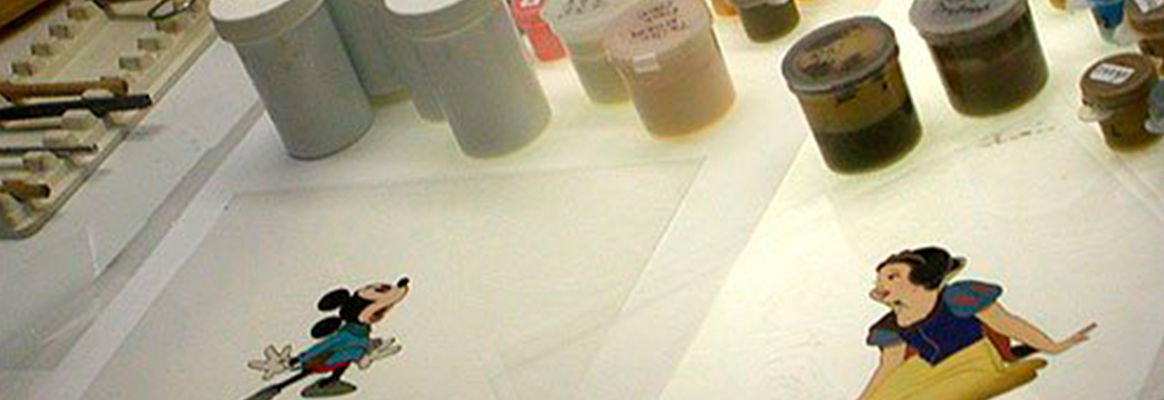Mr. Banks Called!
A nice fellow called me as the year was getting under way. I was just back from a little time off between Christmas and the new year and this was my first question of 2014.
It turned out he is a banker and owns some 30 pieces of animation art.
Mr. Banks (obviously not his real name) described several different conditions in his art that he had not noticed previously. Some of the anomalies he described were “cel wrinkling at the edges,” “cel shrinkage,” “cel centers sticking to the backgrounds,” to name just a few.
Given the art he said he owns the descriptions of his observations were in keeping with what I might expect. And, as you might guess, none of the treatments for these conditions could be performed by the owner.
“People who call us for assistance with concerns they are experiencing with their art frequently ask if it’s absolutely necessary for them to send their art to us here in the lab,” explains Amelia Dodge, lab manager. “It’s not our desire to keep people from being good art stewards. In fact, we often make suggestions to art owners to help them economically manage their art’s needs. It’s more a matter of knowing how far to go and what to do when something unexpected happens.“
No two pieces of animation art are the same. And, as Amelia so aptly says above, knowing just how to manage a situation is key to keeping your art healthy and well.
Mr. Banks, upon learning what his art required, said, “Well, I can live with it. I’m good with knowing what’s happening.”
Indeed Mr. Banks can indeed live with his art in a compromised condition, but not for long. Art in a deleterious condition is like an uncontrolled downhill ski run: it picks up speed quickly. In short, the art is changing fast and further deterioration of its condition means loss of value even before you know it. The art owner has no way of knowing when the art has gone too far, precluding any intervention save being discarded.
Here’s another example; An art owner called to inquire whether we think his Snow White art should be cleaned. It was an innocent question about a serious matter. And the caller was a dentist. Imagine if a patient had waited 65 years to have her teeth cleaned.
Animation art was meant to last a very short time, only long enough to get from the ink and paint department to camera. In the case of the Disney Studio, to insure the art was photographed in good condition, a painter was assigned to the camera department to make last minute touch-ups on cels.
The point of this blog entry is simple: Don’t wait. The value of your art and investment are at stake. Don’t wait until its too late. When is that? Think “RIGHT NOW”!


0 comments